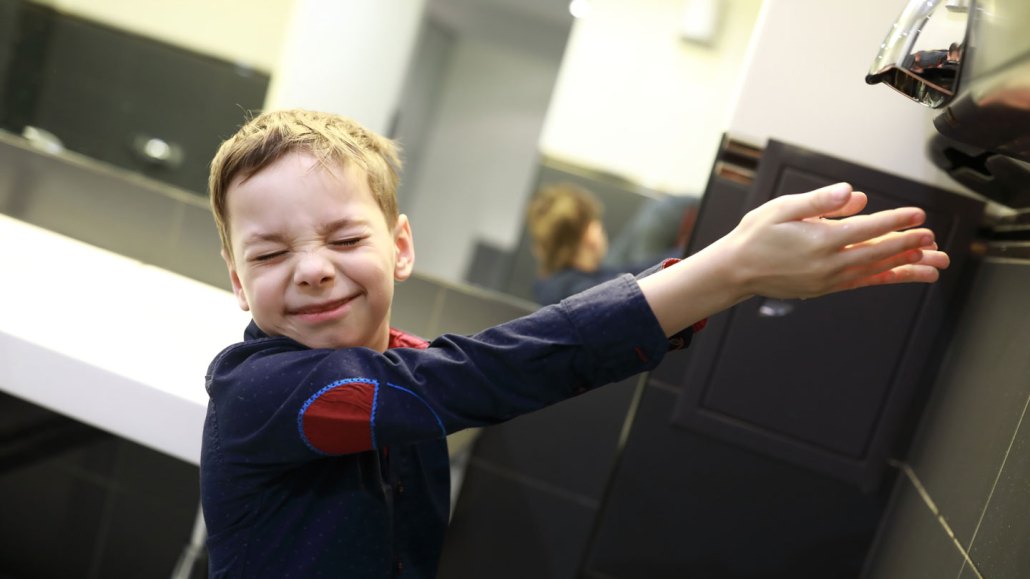Hand dryers can infect clean hands with bathroom germs
In tests, the hot-air machines spread far more microbes than paper towels

Hot-air hand dryers spray microbes all over clean hands. Paper towels might be a better option after washing up. That's what Zita Nguyen found in her project, which she described at the Regeneron ISEF competition this week.
Radist/iStock/Getty Images Plus
Share this:
- Share via email (Opens in new window) Email
- Click to share on Facebook (Opens in new window) Facebook
- Click to share on X (Opens in new window) X
- Click to share on Pinterest (Opens in new window) Pinterest
- Click to share on Reddit (Opens in new window) Reddit
- Share to Google Classroom (Opens in new window) Google Classroom
- Click to print (Opens in new window) Print
DALLAS, Texas — Scrubbing your hands with soap and water washes away germs. But the hot-air hand dryers found in many public restrooms seem to spray microbes right back onto clean skin. That’s what 16-year-old Zita Nguyen found by swabbing people’s freshly washed and dried hands.
She showcased her findings this week at the Regeneron International Science and Engineering Fair (ISEF). Held in Dallas, Texas, this competition is a program of the Society for Science (which also publishes this magazine).
Toilets in public restrooms seldom have lids. So flushing them sprays the germs from excreted wastes into the air. That same air is drawn into those wall-mounted electric hand dryers. These machines provide a nice warm home in which microbes can flourish, Zita says. Cleaning the inside of these machines can be difficult, she adds.

“Freshly washed hands are getting contaminated with this bacteria that grows inside these machines,” Zita says. The 10th grader attends duPont Manual High School in Louisville, Ky.
The idea for her project came from the pandemic. Many people physically distanced to limit the spread of SARS-CoV-2. It’s the virus responsible for COVID-19. Zita wanted to explore that idea with hand dryers. Would drying hands farther away from the hot-air dryer lessen the number of germs that fall back onto the skin?
The teen had four people wash and dry their hands in restrooms at a mall and a gas station. The participants scrubbed with soap and water. After each washing, they dried their hands using one of three different methods. In some trials, they simply used paper towels. In the others, they used an electric hand dryer. Sometimes, they held their hands close to the machine, about 13 centimeters (5 inches) below it. Other times, they held their hands about 30 centimeters (12 inches) below the dryer. Each hand-drying condition was performed 20 times.
Right after this drying, Zita swabbed their hands for germs. Then she rubbed the swabs onto petri dishes filled with nutrients that would fuel a microbe’s growth. She housed these dishes in an incubator for three days. Its temperature and humidity had been designed to aid microbial growth.
Afterward, all the petri dishes were covered with off-white spots. These splotches were round yeast colonies, a type of nontoxic fungus. But Zita warns that harmful bacteria and fungi might be lurking in other restrooms’ dryers.
Fewer than 50 colonies, on average, turned up in each dish exposed to swabs from hands dried with paper towels or from hands held farther from the electric dryers.
In contrast, more than 130 colonies, on average, grew in petri dishes from hands held close to the hot-air dryers. At first, Zita was amazed by all the microbes in these dishes. Quickly, however, she realized they represented what covered people’s hands after using a hot-air dryer. “This is disgusting,” she now says. “I’m never going to use these machines again!”
Zita was among more than 1,600 high school finalists from 64 countries, regions and territories. Regeneron ISEF, which will dole out nearly $9 million in prizes this year, has been run by Society for Science since this annual event started in 1950.







